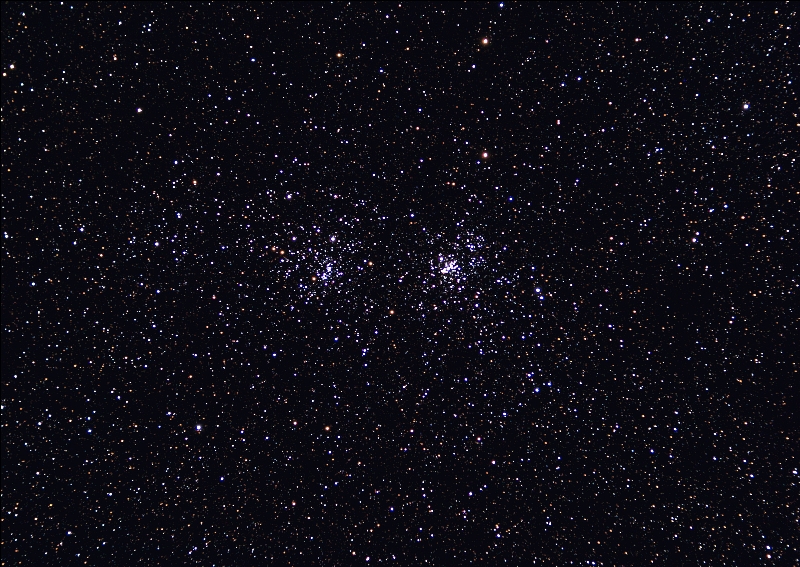 |
NGC 869 and 884 - The Double Cluster in Perseus
 |
Copyright 2004 Hap Griffin
The famous double star cluster in the constellation Perseus was known in antiquity, first cataloged by the Greek astronomer Hipparcos in 130 B.C.
Both clusters are at a distance from us of over 7000 light years, but only a few hundred light years apart. Both are quite young based on the spectral measurements of their main sequence stars. NGC 869 is listed at 5.6 million years and NGC 884 at 3.2 million years (Sky Catalog 2000). They are approaching us at 22 and 21 km/sec, respectively.
This pair can be spotted naked eye as a bright "knot" in the fabric of the background Milky Way southeast of the constellation Cassiopeia.
Date/Location:
September 19, 2004 Griffin/Hunter
Observatory Bethune, SC
Instrument: Canon 10D Digital SLR through Orion ED80 w/ Meade
.63 Focal Reducer piggybacked on LX-200
Focal Ratio: Approx. f4.5
Guiding: Auto through LX-200 w/ SBIG ST-237
Conditions: Visually clear - aftermath of Hurricane Ivan
Weather: 55 F, slight breeze
Exposure: 30 minutes @ ISO 800 (10 x 3 min exposures) calibrated with flat frame
and Master Dark frame (average of 6 darks)
Filters: None
Processing: Focused and captured with DSLRFocus.
RAW to TIFF conversion, frame calibrations, alignment, Digital Development,
Adaptive Richardson_Lucy deconvolution, scaling and JPEG conversion with ImagesPlus.